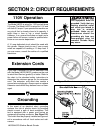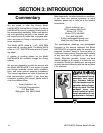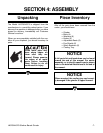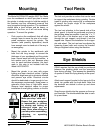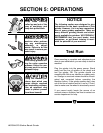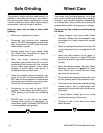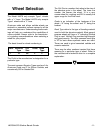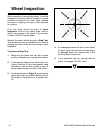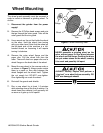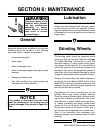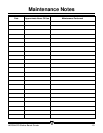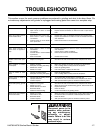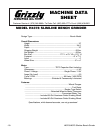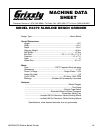
-12- H4378/H4379 Slimline Bench Grinder
Wheel Inspection
Before mounting a new grinding wheel, it must be
inspected. Do not assume that a wheel is in sound
condition just because it is new—often, damage
can occur in shipping, with age, or with exposure
to moisture.
First, the wheel should be given a Visual
Inspection. Look for any cracks, chips, nicks or
dents in the surface of the wheel. If you see any
of these, DO NOT use the wheel.
Second, the wheel should be given a Ring Test.
This test will give you an indication of any internal
damage that may not be obvious during a visual
inspection.
To perform a Ring Test:
1. Make sure the wheel that you test is clean
and dry; otherwise, you may get false results.
2. If size permits, balance the wheel with your
finger in the hole. If this is not possible, hang
the wheel in the air with a piece of cord or
string looped through the hole in the center.
3. At the spots shown in Figure 2, gently tap the
wheel with a light non-metallic device such as
the handle of a screwdriver or a wooden mal-
let.
Figure 2. Ring test tapping locations.
STOP
Rated 3500 RPM
Make sure your grinder is not
faster than the rated RPM of this wheel
WARNING
Grinding can be dangerous
Visually inspect this wheel
for cracks, nicks,chips
Type-1
Aluminum
Oxide
60 Grit
Grade L
Vitrified Bond
4. An undamaged wheel will emit a clear metal-
lic ring or “ping” sound in each of these spots.
A damaged wheel will respond with a dull
thud that has no clear tone.
5. If you determine from the ring test that the
wheel is damaged, DO NOT use it!




